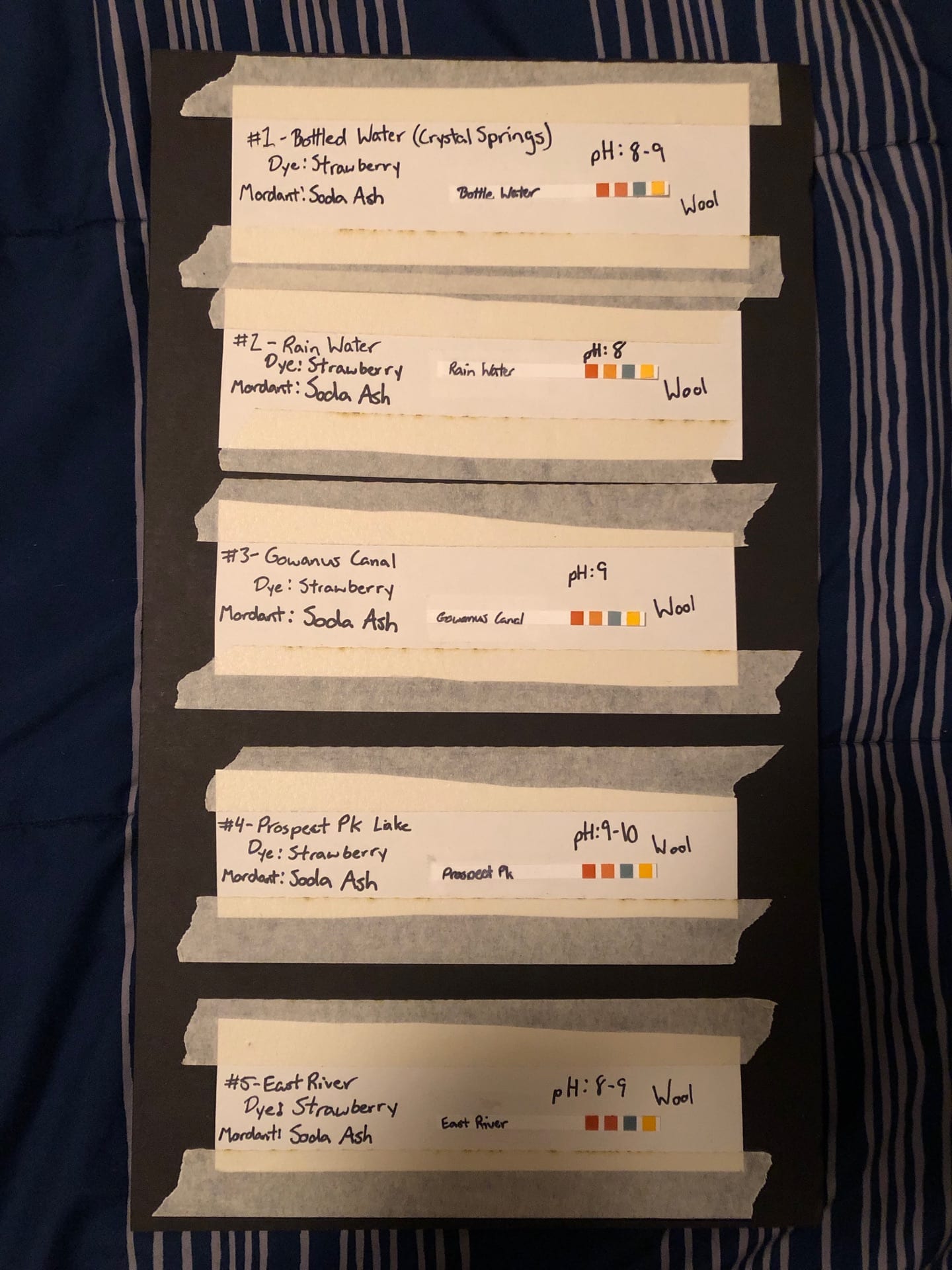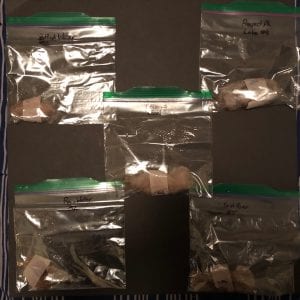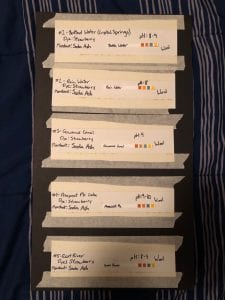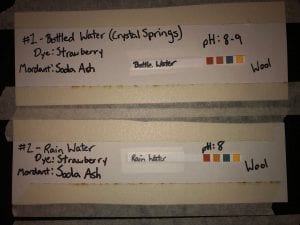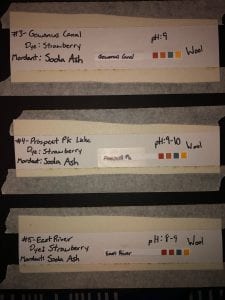To begin this experiment, I first visited the three required bodies of water: Prospect Park Lake, Gowanus Canal, and East River. Prospect Park Lake was the easiest, as there were no obstacles keeping me from getting the water sample. Gowanus was the toughest of the three, because it was hard to find an opening to go and get a sample. Last came the East River, which upon getting close to the water for a sample I almost fell in entirely. The other two water samples were that of bottled water and rain water.
I dipped a piece of wool into each water sample, specifically the wool from the Making Center’s cold process dye kit. It was the simplest and cheapest medium that could be used to test the waters. The dirtiest water came from Prospect Park Lake (Which, ironically, I thought the dirtiest would be from Gowanus Canal). Overall, just about every major body of water in New York City is quite polluted. One body of water that I could have visited is Orchard Beach; a perfect example of pollution. After retrieving my samples I returned home to create a natural dye.
I created this dye with the use of fresh strawberries. Upon boiling the strawberries for about 20 minutes, the water turned into a deep red. The polluted samples of wool, each labeled #1-#5 were then submerged into this same pot of water for another 10 minutes and left to soak in the dye. Following this submersion, the samples were then tested individually in separate bowls of water with a mordant. The selected mordant was soda ash. the final part of the experiment consisted of placing the samples in new bags to store, testing the pH of each bowl, and recording all of my findings for the experiment.
After giving some thought to a solution, I came up with an idea for a positive approach. My idea is to introduce a third trash bin, one that is specifically for liquids. the outside will be made of an impenetrable, transparent plastic or glass with measurements in gallons. This way the public can be shown how many gallons of water the disposers have saved from pollution as the bin fills up. The department of sanitation could then pick these filled bins up, and pour them into a filter, where the clean water will then flow back into the ocean.
Considering the cost and amount of materials used to potentially design and build a single Anti-pollution Bin, the concept is not entirely out of reach for designers. Just one of the faces can show a record of how much water in New York City has already been polluted, but the other three sides should be transparent. It’s important to not guilt-trip the viewers. It discourages them from putting any effort to make a difference. This logic is similar to how viewers have criticized the general climate change awareness advertisements depicting the starving polar bears. To conclude, it is better to use sustainable design to encourage an audience as opposed to using an advertisement that would discourage them.


